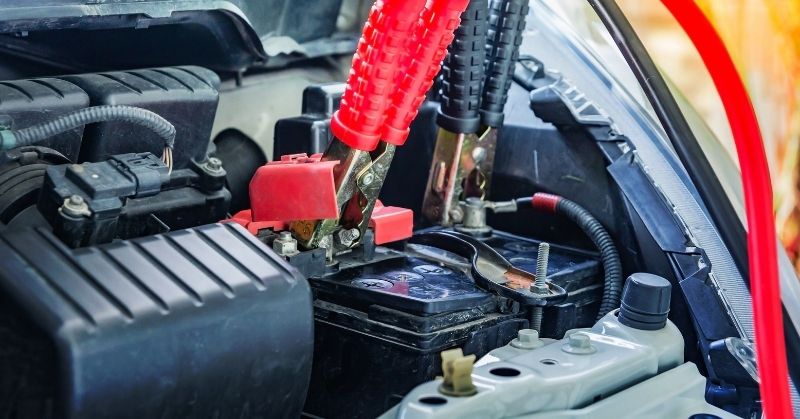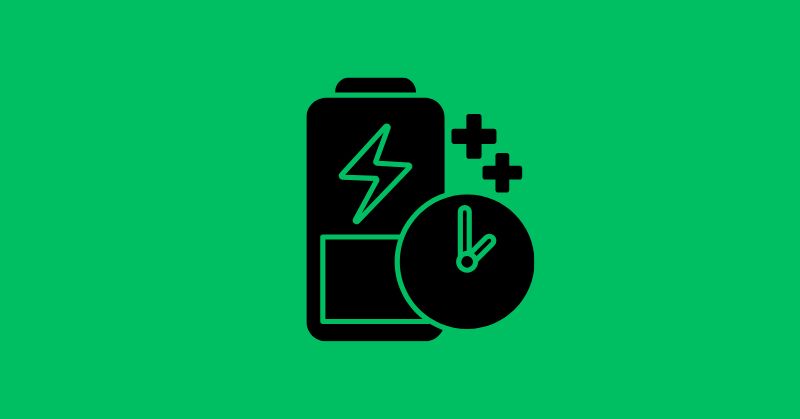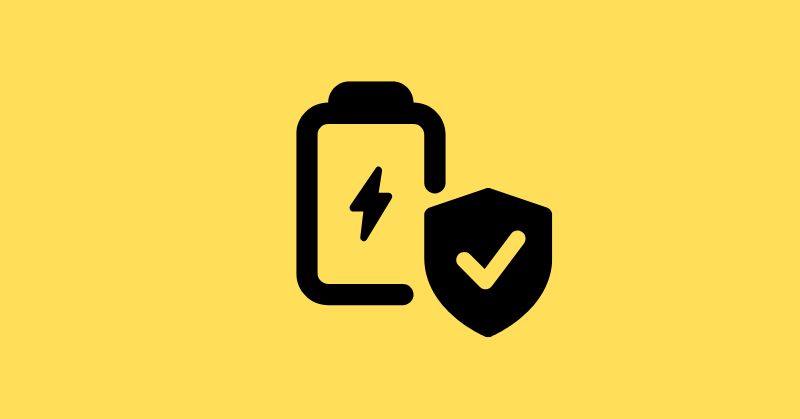How to Charge RV Batteries: Essential Tips for RV Owners
Suppose you are back from a hiking session and want to rest after a meal. In that case, you will want to turn on the fan and heat food in an RV microwave oven. What if the battery isn't charged and can't run the fan and microwave? This will be a frustrating situation for you. Therefore, you should keep your RV batteries fully charged.
Similarly, before you go for camping or road trips, don't forget to monitor the charge level of the battery. Are you wondering how to charge RV batteries? Searching for ways to charge the battery faster? This article presents a step-by-step guide to charging an RV battery and safety tips. Let's look into detailed specifics.
Methods to charge an RV battery
This section lets you explore different methods to charge your RV battery.
1. Solar panels
It is one of the frequently used methods to charge RV batteries. To charge your battery with solar energy, all you need is solar panels, a solar inverter (to run AC appliances), and a charge controller. The best part of charging RV batteries with solar energy is the freedom. Regardless of where you go in an RV, solar energy is always accessible.
- 1000 Watt-hours of electricity per day (5-6 hours of direct sunlight).
- 10-year workmanship warranty, 25-year 80% output warranty.
- 9 bus-bars and PERC cell technology optimize overall efficiency.
Once you pay for RV solar kits, you can capture the solar energy for free to charge your batteries. The best options include the Renogy 12V 200W RV solar kit and the 12V 400W RV solar kit. If you have high energy needs, you can look for bigger kits to fulfill your power requirements.
2. Alternators
Another useful charging method is using a vehicle alternator to charge an RV battery while you are on the road. One major limitation of this method is that it can't charge the battery at a lightning-fast speed. An alternator can only give your RV batteries a minor boost.
An alternator performs two tasks simultaneously: running the engine and charging the battery. Since it charges batteries slowly, most people use it only for top-ups instead of using it to recharge dead RV batteries. If you often charge an RV battery with a vehicle alternator, it might need a replacement. If you are planning longer trips, it is better to charge your batteries with other methods.
3. Shore power
This method ensures a consistent power supply through a stationary AC electrical source. Shore power is also known as power pedestal. You must have seen plug-ins at RV parks and campgrounds. The external plugs provide only AC currents, which means they will run your AC devices or appliances.
If you want to power up your DC appliances, you will need a converter. Many RVs have a built-in converter that lets you convert AC power into DC energy. This is how you can use AC plug-ins to run your DC devices or appliances.
4. Generator
If your RV has a built-in generator, you can easily charge the battery. Portable generators are the perfect choice for small RVs. You need fuel (like propane or gas) to run generators and charge batteries. Fuel costs will add up to your total investment.
Comparing each method
An alternator can quickly top up your battery but it can't charge it at a fast rate. Shore power offers stationary electricity sources, so you need to go to that particular place for charging purposes. Generators can be a good battery charging method, but their fuel consumption will cost you more. In contrast, solar charging requires one-time investment and provides you with free energy for later uses.

How long does it take to charge an RV battery?
The time required to charge your RV batteries largely depends on several factors, including the type of battery you have, how much it is discharged, the charger type, and the source of energy available for charging.
If we talk about the battery type, lithium iron phosphate (LiFePO4) batteries charge much faster than lead-acid batteries. To be precise, they charge five times faster than lead-acid batteries. However, as stated earlier, the charging time also depends on the input power source.
Similarly, lithium-ion batteries also charge faster than lead-acid batteries. They can hold the full charge within minutes to a few hours, whereas lead-acid batteries need 12 to 16 hours to charge fully. Want to know which battery type is right for you? Learn more the differences between lithium-ion and lead-acid batteries.
The more discharged the battery is, the longer it will take to charge. This is why the dead batteries take longer to charge than partially charged batteries. Regarding the charger type, you should match the charger voltage with your battery. If the charger delivers higher voltage than needed, it may damage your battery or reduce lifespan.
Getting a rough estimate for charging batteries with different power sources is quite simple. All you need to do is divide the amp-hour rating by the amps an alternator, AC plug, battery charger, or solar panels deliver. For example, if your 300Ah battery is completely discharged and you charge it with a 15A power source, it can take up to 20 hours (300/15) to charge fully.
Charging RV batteries with generators is faster than using solar cells. However, it depends on the battery type and the generator's output. Charging a battery with the solar system will take 1.5 to 48 hours.

How to charge RV batteries? Step-by-step guide
Following the best practices for charging your RV batteries is crucial. If you are a newbie, you should first learn how to charge an RV battery. Charging the batteries carefully maximizes their performance and extends their overall lifespan. Below is a list of steps to charge an RV battery.
Step 1: Locate the battery
Apply emergency brakes to prevent injuries and turn off the RV. Once done, find the battery installed in it. Depending on the battery model and size, your RV may have one, two, or more batteries. Different types of RVs may have batteries stored in different locations. For most RVs, you can easily find batteries under the steps or in the storage compartments. You can also find it on the RV's front near the storage bay.
Step 2: Remove the battery cables
As soon as you find the battery in your RV, use a wrench to remove the cables. Remember to remove the negative (black-colored) cable first and then the positive (red-colored) cable. Be sure to follow the mentioned order for removing cables.
Step 3: Clean the terminals
Once the cables are removed, the next thing you should do is clean the battery terminals. Baking soda paste has proven to be an effective tool for removing any corrosive material from the terminals. You just need to apply this paste to the terminals and scrub off the unnecessary material. Once the terminals are corrosion-free, apply petroleum jelly or grease to prevent further corrosion.
Step 4: Check the water level
Remove the fill caps from each battery cell and see if the electrolyte has covered the splash plate. If it has, you don't need to put more water in the battery. If it has not, your RV battery needs water. Remember to pour distilled water into your batteries with a funnel. If you use a dry battery, this step becomes irrelevant.
Step 5: Connect the charger
It is time to connect the charger to the battery terminals to initiate the charging process. Connect the red cable of the charger first to the positive terminal of the battery. Then, connect the negative terminal with black cable of the battery charger. Once you connect both charger clamps to the battery terminals, turn on the charger by plugging it in.
After you start the charging process, let your RV battery charge fully. Once the battery holds the full charge, an indicator light will illuminate.
Step 6: Unplug the charger
Once the battery is charged, you can unplug the charger. Then, remove the charger clamps from the battery terminals. This time, you have to remove the black cable first from the negative terminal and then remove the red cable from the positive terminal.
Note: If you are looking for the fastest way to charge RV batteries, use LiFePO4 batteries with the smart chargers. These batteries hold the full charge five times faster than their lead-acid counterparts.
RV battery charging safety tips
Now that you know how to charge RV batteries. Below is a list of some safety tips you should keep in mind when charging your batteries.
- If you want to buy a battery charger, don't forget to ensure that it is super compatible with the type of battery you have (lead-acid, lithium, or AGM). Always consider amperage and the right voltage level.
- If your RV has lead-acid batteries, place them in a well-ventilated space and prevent their terminals from corrosion.
- Always use a charge controllerwhen charging your RV batteries with solar cells. If you don't use the controller, your batteries may get overcharged when the sun shines more brightly. Overcharging degrades the battery performance and greatly reduces its lifespan. Therefore, avoid overcharging at any cost.
- Proper handling of cables is also crucial. When connecting the charger, connect the red cable first to the positive terminals. In contrast, remove the black cable first from the negative terminal while disconnecting the charger.
- Don't charge a frozen RV battery, and avoid charging or storing it above 50°C (or 122°F).
Poor ventilation, overcharging, and undercharging may lead to RV batteries overheating. This can result in explosions, fires, and other serious risks. To prevent your battery from overheating, avoid overcharging, limit high-load activities, and keep the battery in a cool, dry place.

Conclusion
Keeping your RV batteries charged is crucial during trips, camping, and other outdoor fun activities. If you are wondering how to charge RV batteries with a battery charger or other input power sources, this guide has discussed it in detail.
To charge your RV batteries effectively, be sure to read through the step-by-step guide presented in the discussion above. Remember to follow the safety tips to prevent any sort of risks.
FAQs about charging RV batteries
What is the best way to charge my RV battery?
Different people may have different preferences, e.g., shore power, solar energy, alternator, and generator. However, using solar energy to charge your batteries is the best method. All you need to do is connect solar panels to the roof of your RV and use an inverter. It is a one-time investment with access to an unlimited, free energy source.
Does plugging in an RV charge the battery?
Yes, you can plug your RV into shore power to charge its battery. Make sure your RV has a built-in converter and you turn on the battery disconnect switch before you plug in your RV into the shore power.
How do I keep my RV battery charged when not in use?
You can use a trickle charger to charge the battery at a slow rate and compensate for self-discharge.











